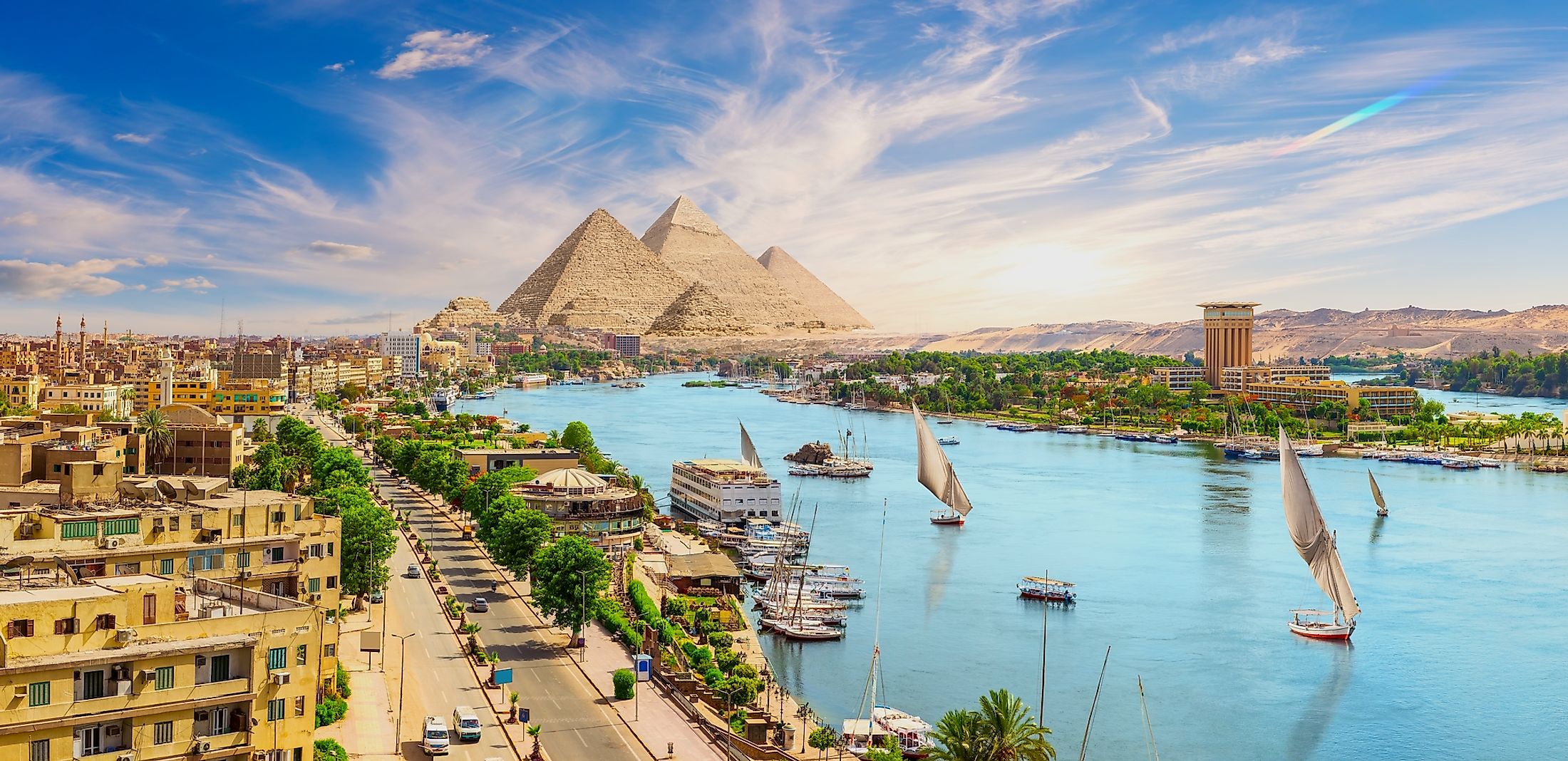
The 10 Longest Rivers In The World
Rivers are the veins and arteries of our world. With over 70% of the earth being water, it is no wonder that our rivers and waterways play a huge role in the lives of people, animals, and ecosystems. Freshwater rivers can be used as drinking sources, habitats, irrigation sources, transportation, and even as sources of power. These are the ten longest rivers and river systems in the world.
1. Nile River - 6,650 km
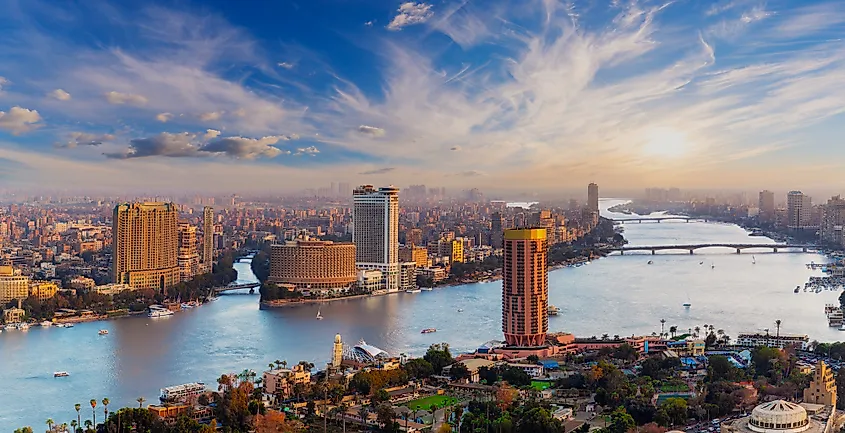
The Nile is the longest river in the world, measuring roughly 6,650 kilometers in length. It runs through a large portion of the continent of Africa and flows through several countries, including Uganda, Ethiopia, Sudan, South Sudan, the Democratic Republic of the Congo, Kenya, Tanzania, Rwanda, Burundi, and Egypt. The Blue Nile and White Nile are the Nile's major tributaries that feed into this river, which flows northward, eventually flowing into the Mediterranean Sea. The Nile is a major source of water and transportation. The waters of the Nile support approximately 40% of the population of Kenya, and it is home to a number of animals as well, including hippopotami, Nile crocodiles, and other animals which use the river as a source of freshwater.
2. Amazon River - 6,400 km
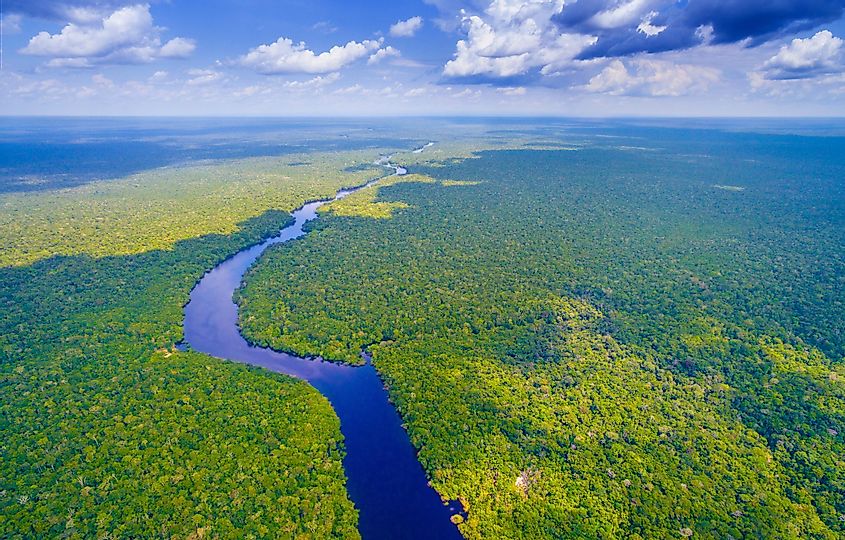
The Amazon River is the second longest river in the world, measuring 6,400 kilometers. It is so close in length to the Nile that some stats have shown it to be actually longer. It is the largest river in the world as well, with the largest volume or discharge volume. The Amazon is so big, in fact, that two of the next largest rivers (by volume) are actually tributaries of the Amazon. The river runs through three countries in South America: Brazil, Peru, and Colombia, and empties into the Atlantic Ocean. The area surrounding the river, namely the amazon rainforest, is known for being an extremely biodiverse area. Many species live in the forests along the river banks, but the waters are also rich with life. Roughly one-third of all known species in the world live within the Amazon region. Thousands of fish species, rare Amazon river dolphins, otters, manatees, and anacondas can be found in the river waters, along with several other prominent reptile species.
3. Yangtze River - 6,300 km
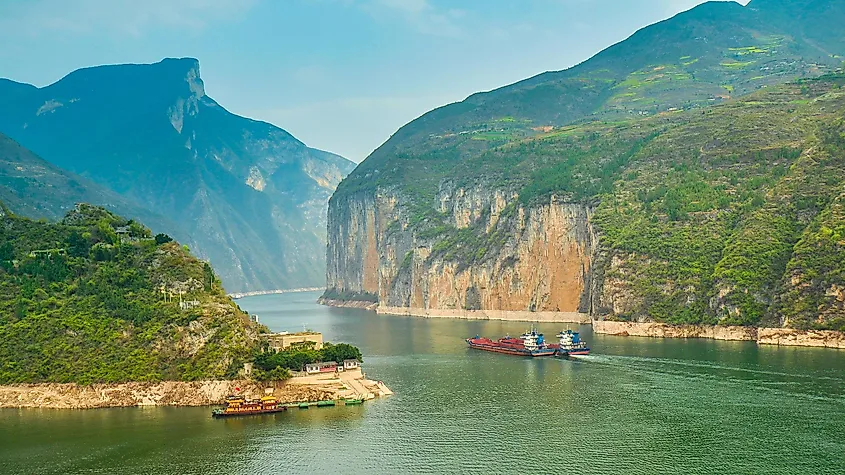
The Yangtze River in China measures 6,300 kilometers and is the third longest river in the world and the longest river in Asia. The river flows in an eastern direction across much of China, emptying into the East China Sea. The Yangtze is a major water source within China and has a drainage basin that includes roughly one-third of the population of the country. Some 400 million people live along its banks. The river has been significant throughout history and plays a pivotal role in China. The river is also an unofficial border between North China and South China. It has been used for drinking water, transportation, and irrigation and has been significant during wartime. Today, the Three Gorges Dam is the world's largest power station, pulling power from the river.
4. Mississippi River - 6270 Km
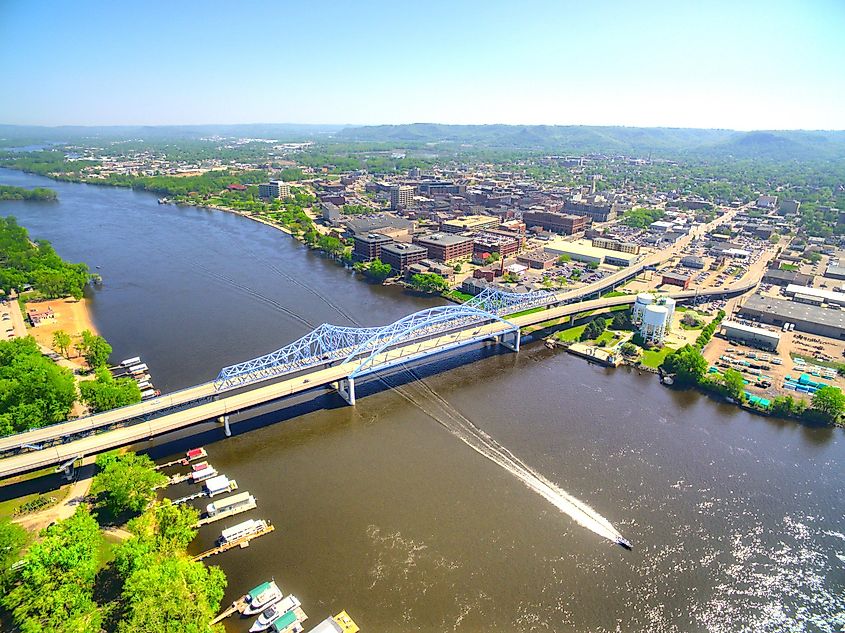
The Mississippi-Missouri River System, in the southern United States, has a length of 6270 kilometers. The Missouri and Mississippi rivers are the two longest rivers in the U.S., but because they flow into one another, they are often thought of as one major river or river system. The Mississippi River has historically been a major source of transportation and is also home to a large array of wildlife. The Mississippi Delta, specifically, has a range of ecosystems that include everything from cyprus groves to marshes and sandy beaches. These regions are home to various animals and reptiles like alligators, turtles, and a range of fish species, as well as waterfowl - both migratory and year-round.
5. Yenisei - Angara - Selenga River - 5,500 km
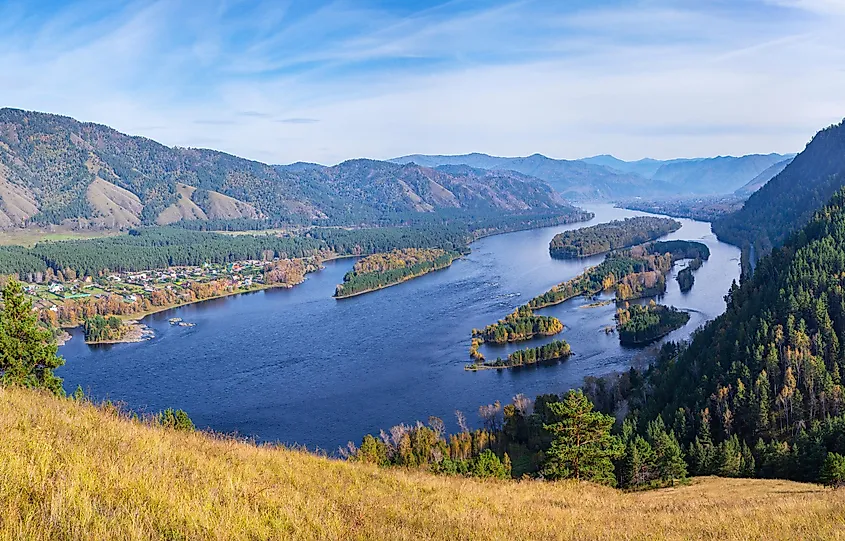
The Yenisei river measures 5,550 kilometers, making it the fifth-longest river in the world. This system is made up of several rivers that run through Russia and Mongolia, emptying into the Arctic Ocean. Though the river is not particularly deep, it flows into Lake Baikal, the deepest and oldest lake in the world. Many fish live within the Yenesei, and the banks are a significant habitat for migratory reindeer, the Aimyr herd, the largest tundra reindeer in the world. Unfortunately, it is believed that the river system suffers from contamination due to radioactive discharge from a secret bomb-making facility.
6. Yellow River - 5,464 km
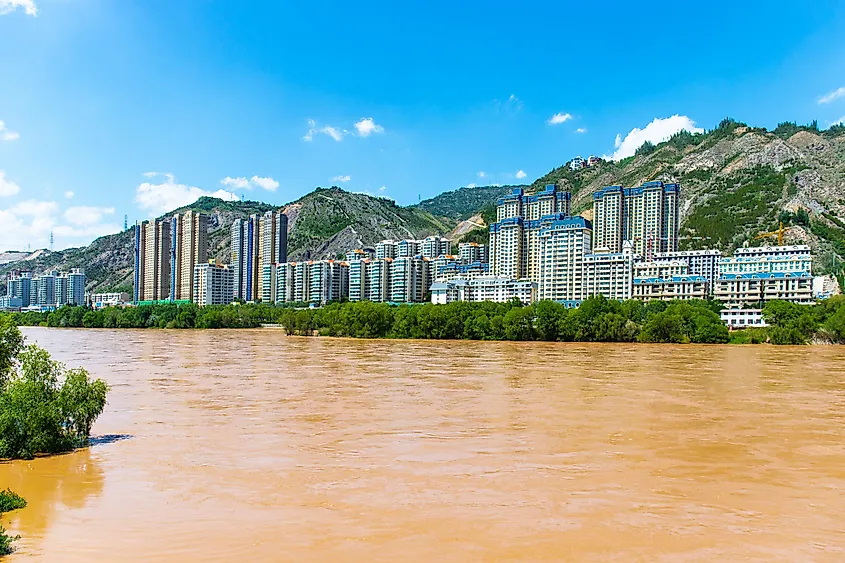
The Yellow River, also known as the Huang He or Huang River, is the sixth-longest river in the world and the second-longest in China. It has a length of approximately 5,464 kilometers. The river flows through nine different provinces in China, from the western province of Qinghai to the Bohai Sea near Dongying. The Yellow River is historically significant as it was the home of major settlements in early Chinese history. The river has also been known to have significant flooding periods, which changed the course of the river throughout history. The river is now home to several major hydroelectric dams and power plants, as well as some 160 different species of fish.
7. Ob - Irtysh - 5,410 km
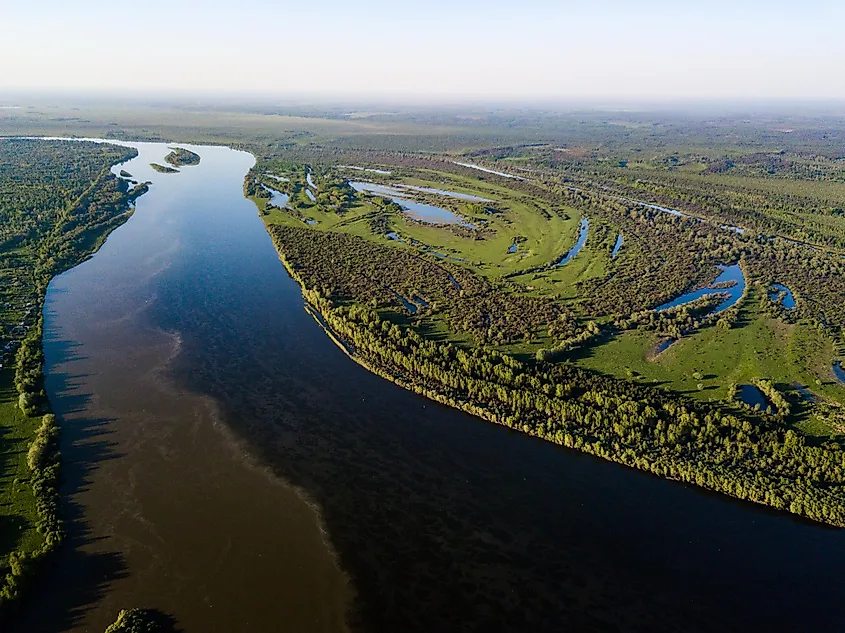
The Ob River measures roughly 5,410 kilometers and runs through much of Russia, eventually emptying into the Arctic Ocean. The third largest city in Russia, Novosibirsk, is located along the river's banks, and the famous trans-Siberian Railroad crosses the river in this city as well. The Ob is significant to Russia and Siberia, both geographically and in terms of industry. The river is used as a source of drinking water and irrigation and provides hydroelectric power through various power plants like Novosibirskaya GES. The river also contains more than 50 species of fish and is a major source of fishing for consumption.
8. Rio de la Plata - 4,880 km
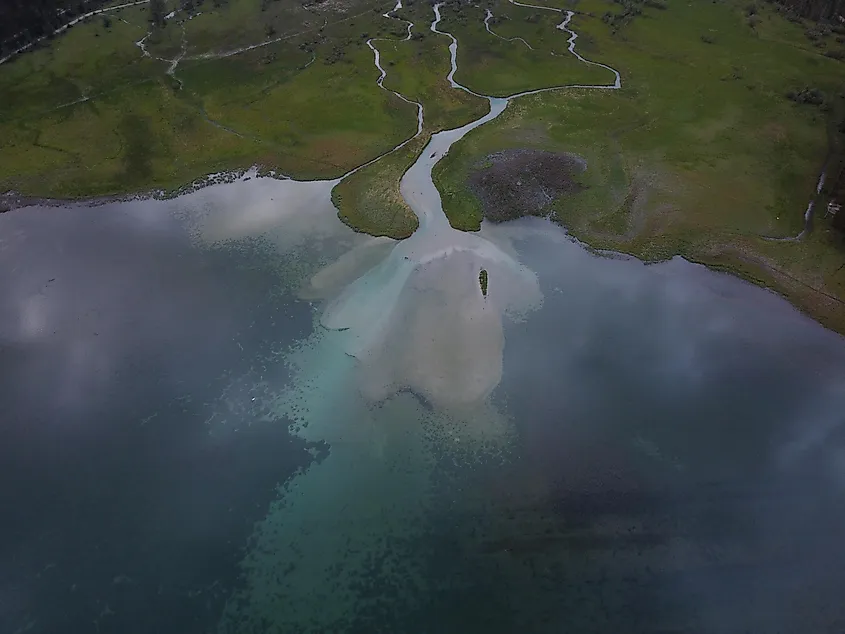
The eighth longest river in the world is the Rio de la Plata, which measures 4,880 kilometers long. This river runs through Argentina and Uruguay and includes the Parana and the Rio Grande. It is also the widest river in the world, opening into a bay-like area at its eastern end. Several major cities sit along the river's edges, including Buenos Aires, Argentina's capital. The river also contains several islands which belong to Uruguay. Notably, the river is an estuary, receiving fresh water from the Parana River and Uruguay River, and saltwater from salty ocean tides and currents. Because of this, the river is a habitat for many marine species, such as green, loggerhead, and leatherback sea turtles, as well as the rare Ls Plata dolphins.
9. Congo River - 4,700 km
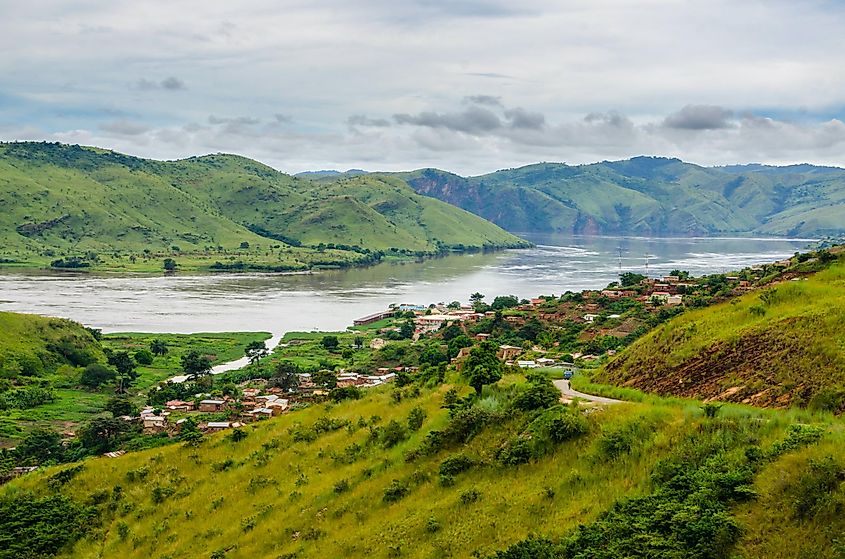
The Congo or Zaire River is the second-longest river in Africa and the second-largest in terms of discharge volume. It also has a depth of up to 220 meters, making it the deepest known river on record. The Congo River, which actually consists of the Congo Lualaba and Chambeshi Rivers, measures 4,700 kilometers in length. The river flows through much of the Congo and crosses over the equator on two occasions before draining into the Atlantic Ocean. The river has a seasonal flow of more than 50,000 cubic meters, making it the most powerful river in Africa. This power is harnessed by some 40 different hydropower plants across the Congo Basin.
10. Amur River - 4,444 km
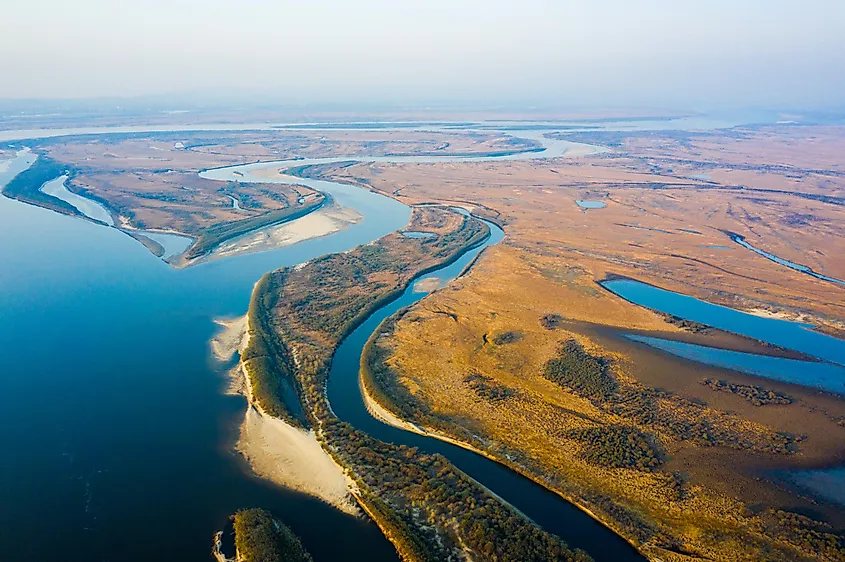
The Amur River is the tenth-longest river in the world and measures approximately 4,444 kilometers. The river forms a natural border between the Russian Far East and Northeastern China, flowing into the Sea of Okhotsk, the Pacific Ocean, and the Strait of Tartary. The river is home to a wide range of animals, including the Amur softshell turtle and various fish species. Many of these are larger predatory fish like Amur pike, northern snakehead, and carp, as well as the massive kaluga, which has been known to reach over 5.5 meters in length.
Each of these rivers has played a significant role throughout history and today. From hydropower to irrigation to development, these rivers form the highways of the natural world. Each of these freshwater rivers has helped shape the landscape around it and through which it cuts, both literally and socially, to contribute to the shaping of flora, fauna's habitats, and human industry and development.











